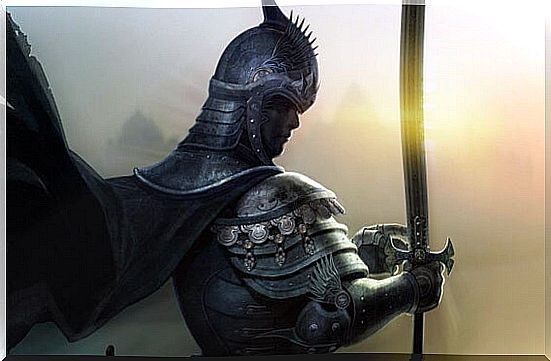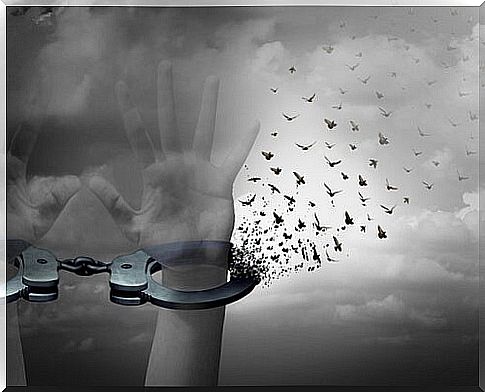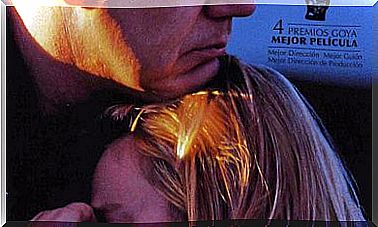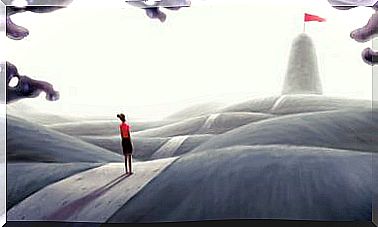The White Knight Syndrome: People Who Save

The white knight syndrome defines that person with an almost compulsive need to save, help and solve the problems of others. The behavior of this profile is explained by a history of abandonment, trauma and unrequited affections. Hence, their ability to empathize with the pain of others is very high. Although the help they provide is not always the most successful.
Most of us know a born rescuer, someone who instead of a heart seems to have a radar with which to detect needs and to be the standard-bearer of utility. Sometimes, as we well know, that help can be intrusive. It can even cause us discomfort or even veto the opportunity to be responsible and solve our own problems.
Other times, of course, we appreciate that sincere and always delivered altruism. However, what we sometimes do not see is the background behind these dynamics, of this need. The white knight syndrome defines a part of our population. They are often invisible people, a behavioral profile that has behind them wounds that no one sees, knots that they have not resolved effectively.
This syndrome was described in 2015 by psychologists and professors at the University of Berkekey Mary C. Lamia and Marilyn J. Krieger. Let’s see more data on the subject below.

Characteristics of the white knight syndrome
In the storybooks the white knight is the savior of that lady in distress. In real life, this figure of our folklore can be a man or a woman, and their highest aspiration is to initiate affective relationships with damaged or vulnerable people. This bond can allow them to be of use, affectively repair the other, reaffirm and reaffirm the partner at the same time.
However, it is difficult for injured people to repair anything. Often, what they achieve is to make the wound bigger, to be that mirror where they can magnify the traumas and suffering. They are rescues, as we see frustrated, that bring an inevitable unhappiness. Thus, what is hidden behind the white knight syndrome and what explains its behavior is the following:
Causes of White Knight Syndrome
A past of abuse, the figure of authoritarian parents or the lack of a healthy and affectionate attachment in childhood, often common factors when shaping the white knight syndrome. Having lived several experiences of abandonment, both at the family level and with affective couples, are usually other triggers.
Traits that define the white knight
Fear of experiencing emotional distance again, of being hurt, betrayed and abandoned.
- They are very vulnerable people, with a low tendency to frustration, they feel offended and disappointed by often insignificant acts.
- They have low self-esteem and high insecurity.
- They lack ecpathy. That is, they do not separate the emotional reality of others from their own, hence they suffer abundant emotional contagions. They do not know how to set limits and they identify in such a way with those who suffer, with those who are worried or scared, that what they often achieve is to intensify the suffering of others even more.
- They are prone to build highly dependent emotional relationships. They long to be everything to the other person. They seek to be that essential support, that daily nutrient and that other indispensable half. Something like this ends up generating unhappiness and a high emotional cost for both parties.

Types of white knights
The white knight syndrome does not present a single typology. It actually falls within a behavioral spectrum where there are figures with more normal features and more pathological extremes. They are as follows:
- The highly empathetic white knight. In this case we have someone who establishes an inordinate emotional connection with his partner or another person. Now, that empathy often becomes a source of extreme fear. Hence the jealousy, the desire for control, the anguish at the idea of being betrayed …
- The idealistic white knight. This typology defines that figure who is looking for people to rescue and repair. They long to create someone perfect, someone ideal. Being responsible for that improvement in turn allows them to be filled with glory.
- The scared white knight. Of all the types of white knights, this is the most troublesome. He locks up behind him a person who has serious traumas (abuse, mistreatment …). They feel the need to be of help to others, yet they do not know how to give that help, how to approach others, how to offer affection.
- Lastly, we have the “balanced” white knight syndrome. He is that focused and respectful savior who attends to the needs of his environment. Give support with freedom respecting the other and always strive to do well. However, it is still a compulsive behavior and therefore poorly adjusted.
The white knight must only rescue one person: himself
Being a “balanced” white knight does not relieve us of the real problem. We continue to kill other people’s dragons, we continue to hold a sword and a helmet to enter battles that belong to us. Helping those in need is fine and noble. Being that helping hand for the people we love is positive. However, no one deserves to go through life just being a savior.
The white knight syndrome is solved in only one way: by saving ourselves first. Undertaking the most difficult journey of all, the one where it is necessary to travel to an internal universe, there where we face our own demons to understand them, defeat them and fill our darkest corners with light.
Let us also not hesitate to carry out the most courageous act of all for a white knight: ask others for help, request the help of specialized professionals.









